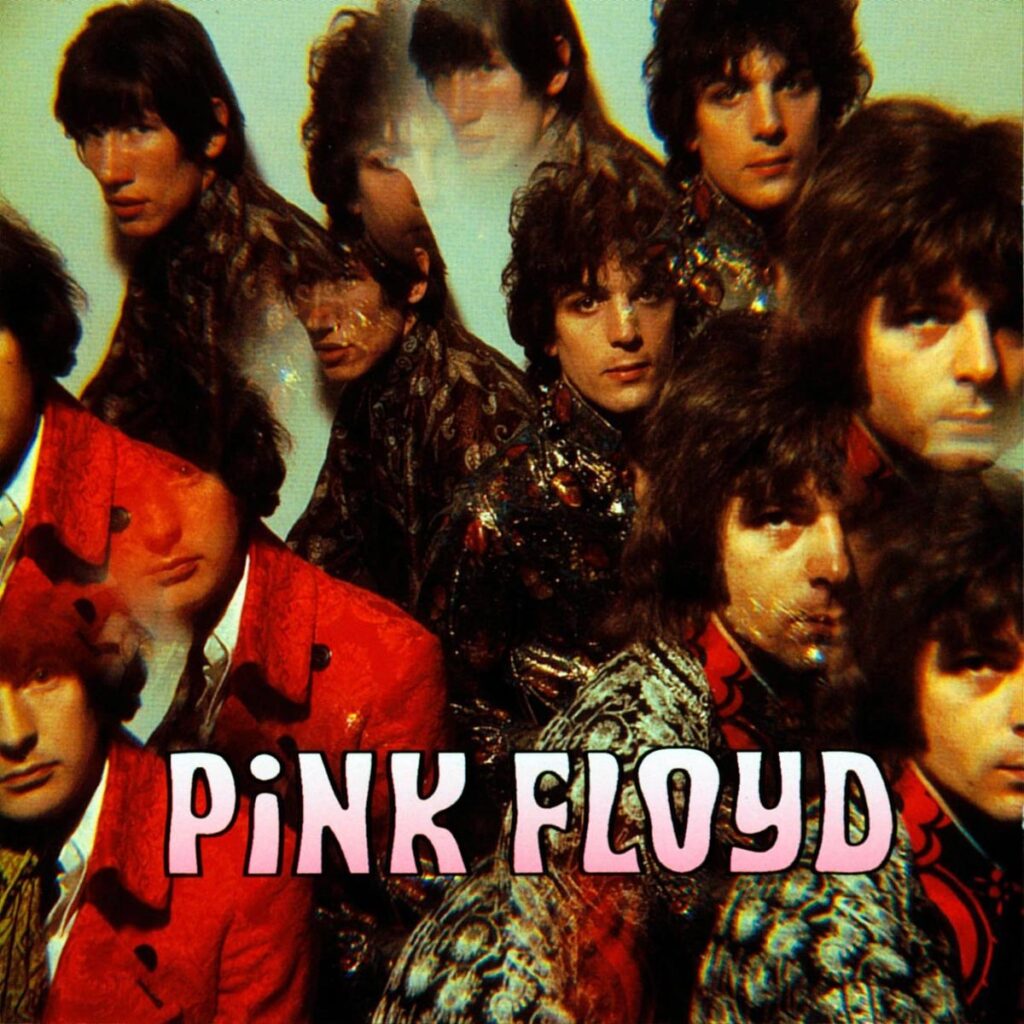They were actually architecture and art students and saw their appearances as a form of “art performance”.
The lightshow was therefore often more important to the early Pink Floyd than their instrumental skills. Because the musicians didn’t have much of substance to add to the songs they covered anyway, they preferred to take refuge in instrumental sound experiments. However, it was precisely these free improvisations that captured the psychedelic, drug-affine zeitgeist in 1966/67 and were therefore increasingly expanded by the band. In London’s UFO Club, Pink Floyd became the pioneers of “space rock”. Their drummer Nick Mason once described the structure of the long live improvisations with the formula “quiet, loud, quiet, loud again”. From gig to gig, however, the improvisations developed a certain sequence of ideas, a rough structure.
When the first Pink Floyd album The Piper At The Gates Of Dawn was created, the producer first stopped the sprawling instrumental passages in the studio. It was important to him to create manageable, easily consumable three-minute songs. Almost all of these rather bizarre little songs (“Lucifer Sam”, “The Gnome”, “The Scarecrow”, “Bike” etc.) were written and sung by Syd Barrett, the legendary founder and original guitarist of the band.
To compensate, however, the producer then allowed the quartet a single big, “free” trip, that typical “weird shit” of the band – which became “Interstellar Overdrive”. This track gives an idea of what the early Pink Floyd sounded like at their infamous club gigs.
The band recorded six different versions in the recording studio in February and March 1967 (a demo version had already been created in 1966) – these were different attempts to create a convincing “short version” of the live practice for the record. However, the order of the individual improvisational ideas in the piece always remained largely the same.
At almost ten minutes long, “Interstellar Overdrive” is the first instrumental trip of this length to be released by a rock group on a studio record. The band is said to have been inspired by Frank Zappa and the Byrds, but above all by the British free jazz trio AMM. All four musicians also produce “innovative” sounds on their instruments that they have already tried and tested. The recording is clearly structured by the two drum beat breaks (2:20 to 3:20, 6:10 to 7:50) – in the second drum break, however, Mason supports the free (non-rhythmic) chord changes of the organ with the cymbals. The long track opens with a six-bar motif figure (until 0:50). When this motif returns at the end (from 8:40), it is psychedelically alienated by extreme stereo and delay effects.
“Interstellar Overdrive” is the main reason why the album The Piper At The Gates Of Dawn became the most famous record of psychedelic rock. The track had a reputation for being the ideal accompaniment to LSD trips. From 1966 to 1970, “Interstellar Overdrive” was part of Pink Floyd’s concert program, often as an opener. On stage, the piece could last more than 20 minutes and had further improvisational episodes. It was also covered by many renowned bands (e.g. T. Rex, Hawkwind, Pearl Jam) and is often played as a tribute to the late Syd Barrett.


